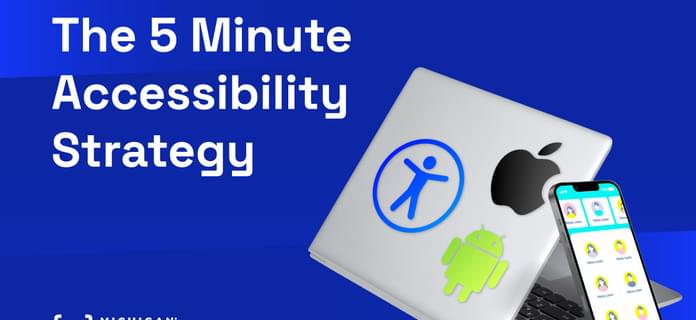Advanced Tailwind: Container Queries
July 28, 2023Explore some advanced web layout techniques using Tailwind CSS framework
Read moreRunning an iOS app on a physical device requires two components: a signing certificate and a provisioning profile. The signing certificate is issued by Apple as part of their developer program and is used by the device to verify the integrity and origin of the app before it is allowed to run. A provisioning profile controls what devices are authorized to run the app and enumerates the app’s entitlements. The provisioning profile is also issued by Apple through the developer portal, but developers can choose what devices and entitlements the profile authorizes.
Entitlements are special iOS features (such as Push Notifications, Apple Pay, HealthKit integration, etc) which require special configuration and authorization to use in an app. Enabling these features is integrated with the code signing process because some entitlements can enable communication and sharing of data with other apps, parts of iOS, or even websites. Apple uses capabilities to protect potentially sensitive data form being exposed to malicious apps. Integration with the code signing process helps ensure that the app developer has full control over what data is allowed to be shared and who/what it is shared with.
There are two types of signing certificates: Development and Distribution.
Each developer typically has their own development certificate which authorizes them to deploy an app to a device from their own computer using Xcode. An app signed with this certificate can only be deployed to a device by someone who also has the matching private key. This makes builds signed with a development certificate unsuitable for beta distribution because you should never distribute your private keys.
Apps signed with a distribution certificate can be installed on devices without the matching private key which is why this kind of certificate is required for App Store submission. This certificate type is also used when creating beta releases on services such as HockeyApp. Unlike development certificates, only one of these is used at a time (because of the 1-to-1 relationship with Release and AdHoc provisioning profiles, which I’ll describe next). This certificate is usually “owned” by the continuous integration server which automatically deploys builds to HockeyApp, TestFlight, or the App Store.
There are three types of provisioning profiles: Development, AdHoc, and Release.
Development profiles include the list of devices used for development and debugging with Xcode. Multiple development certificates can be linked to this type of profile and each developer that will be working on the app needs to have their development certificate added to the development profile. Any physical device will need to be listed in the profile if you want to run or debug the app on the device with Xcode.
While using a development profile, entitlements are automatically added to the
profile when you enable them with the *.entitlements file within your Xcode
project. Note that when building an app with a development profile and
certificate, you are limited to using the sandbox push notification gateway.
This profile is similar to a development profile in that devices must be added to it to be able to run the app. However, when building with an AdHoc profile, the app must be signed with the distribution certificate linked to the profile. AdHoc profiles may only have a single distribution certificate associated with them. Apps built with an AdHoc profile and signed with a distribution certificate may be distributed to devices listed in the profile without having to use Xcode or the private key.
Entitlements must be configured when issuing an AdHoc profile to match the
*.entitlements file. If the entitlements in the AdHoc profile do not match
what is listed in the *.entitlements file, the app will not be allowed to run
on a device. Apps built with an AdHoc profile may use the production push
notification gateway (in addition to the sandbox).
When submitting an app to the App Store, you must build it with a release profile and sign it with a distribution certificate. A release profile works just like an AdHoc profile, with the exception that you do not need to add authorized devices to it (because it will be eligible to run on any device when downloaded from the App Store after release). Apps built with a release profile cannot be installed on a device using Xcode or from services like HockeyApp. The only way to install an app built with a release profile is to download it from the App Store or the TestFlight beta program.
A Note About Apple Watches
If a device is paired to an Apple Watch, the watch must also be included in the provisioning profile, otherwise the device will not be permitted to run the app.
Developers have lamented the complexity of the codesigning system in iOS for years because managing certificates and profiles usually requires many trips to your apple developer account console. Fortunately, Apple added automatic code signing management to Xcode 8 at WWDC 2016. By checking the Automatically manage signing box in your project settings, Xcode will generate signing certificates and provisioning profiles for you using your developer account credentials. This is usually enough for many developers but manual setup is still neccesary when adding devices to a profile that are not linked to your developer account, or when using a signing identity from a developer account that you don’t have access to.
Looking for more like this?
Sign up for our monthly newsletter to receive helpful articles, case studies, and stories from our team.

Explore some advanced web layout techniques using Tailwind CSS framework
Read more
We discuss how you can make a plan in just 5 minutes to provide accessibility in your mobile app.
Read more
Artificial Intelligence (AI) is becoming more prevalent, but less understood. Through examples of organizations leading the charge in each of these areas, I hope to empower you to make better decisions for your enterprise and career.
Read more